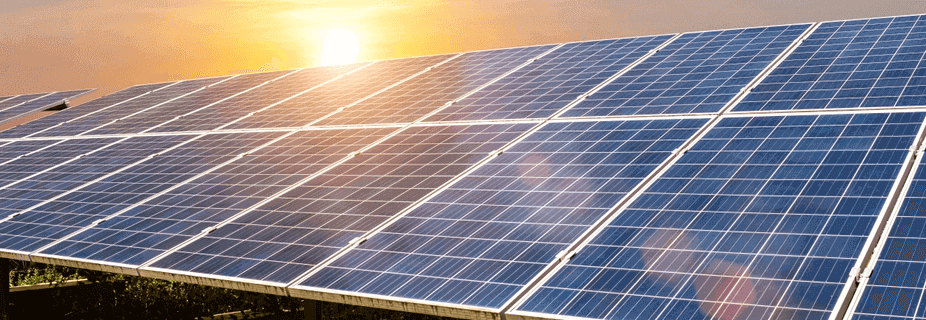A new feed-in tariff has been introduced for solar customers in Victoria and New South Wales, known as a ‘time-varying feed-in tariff’. This is a FiT that pays a different rate depending on the time of day that solar power is exported to the grid. But just how does this new FiT work and what does this mean for your solar investment? This Canstar Blue article breaks it down for you.
On this page:
- What is a time-varying feed in tariff?
- What is the time-varying feed in tariff in Victoria?
- What is the time-varying feed in tariff in New South Wales?
- Will a time-varying solar feed in tariff save me money?
- Time-varying feed in tariff vs single rate tariff examples
- What does a time-varying solar feed in tariff mean for my solar investment?
Advertisement
What is a time-varying feed in tariff?
When solar panels produce more electricity than what your home can use, the excess solar power is fed back into the electricity grid in exchange for what is called a ‘feed-in tariff’ (FiT). This is a small rebate of a few cents for every kWh of electricity that your system exports. Feed-in tariffs have traditionally been ‘single’ or ‘flat’ rate, meaning solar panel owners were paid the same amount for their solar power regardless of when it was exported to the grid.
Customers on a time-varying feed-in tariff, however, are paid a different rate for exported solar power depending on the time of day. Similar to time of use electricity tariffs, a time-varying feed-in tariff is usually broken into three time periods: peak, off-peak and shoulder.
The peak period is when most people use electricity – generally from around 3pm to 9pm on weekdays. Customers with solar power are paid the most for their exported solar energy during this time because there is high demand for electricity. The off-peak period runs from late night to early morning, usually around 10pm to 7am when everyone’s asleep and there’s a low demand for electricity. Customers are paid a small FiT in the unlikely event that solar panels are producing electricity during this time. All other times are referred to as the ‘shoulder period’ and customers are paid a medium rate for solar power.
What is the time-varying feed in tariff in Victoria?
The Essential Services Commission states that energy retailers in Victoria can offer solar customers a flat minimum rate of 3.3c/kWh at all times, and/or two different time-varying feed in tariff options when solar customers export to the electricity grid.
Victoria offers two options for time-varying minimum rates. Keep in mind that these are only minimums and some Victorian energy retailers may offer special deals with even higher FiT rates.
Option one:
| Period | Weekdays | Weekends | Rate (c/kWh) |
|---|---|---|---|
| Overnight | 10pm-7am | 10pm-7am | 7.6 |
| Day | 7am-3pm and 9pm-10pm | 7am-10pm | 2.8 |
| Early Evening | 3pm-9pm | n/a | 7.0 |
Source: Essential Services Commission, Minimum Feed-in Tariff. Accurate as of January 2025.
Option two:
| Period | Everyday | Rate (c/kWh) |
|---|---|---|
| Shoulder | 9pm-10am and 2pm-4pm | 4.1 |
| Off-Peak | 10am-2pm | 2.1 |
| Peak | 4pm-9pm | 8.4 |
Source: Essential Services Commission, Minimum Feed-in Tariff. Accurate as of January 2025.
What is the time-varying feed in tariff in New South Wales?
The New South Wales Independent Pricing and Regulatory Tribunal has also introduced time dependent feed-in tariffs for solar customers. However, its pricing is simply benchmark ranges, not minimum amounts. Pricing on these tariffs range from 4.7c to 22.0c/kWh depending on the time of day.
New South Wales benchmark ranges for time-dependent feed-in tariffs
| Time | Rate (c/kWh) |
|---|---|
| 6am to 3pm | 4.7-6.0 |
| 3pm to 4pm | 6.9-8.8 |
| 4pm to 5pm | 8.1-10.1 |
| 5pm to 6pm | 9.4-11.9 |
| 6pm to 7pm | 18.4-22.0 |
| 7pm to 8pm | 12.6-15.1 |
| 8pm to 6am | 9.6 to 11.5 |
Source: Independent Pricing and Regulatory Tribunal NSW. Accurate as of January 2025.
Will a time-varying feed in tariff save me money?
A time-varying solar tariff has the potential to help cut your power bills, but the benefits will depend on how energy-savvy you are and your home solar set-up. Solar panels produce the most electricity between 8am and 4pm, depending on the location and season. This means that the majority of your solar exports would be during off-peak or shoulder periods.
However, if you have a solar storage battery, you could store solar power produced during the day and export it during the peak period to receive the higher feed-in tariff rate at night. If you have energy monitoring technology, you can also use it to see when your solar panels are producing electricity and adjust your usage.
Alternatively, if you haven’t installed solar yet it’s worth enquiring about the feasibility of positioning solar panels to face westward, as this allows the panels to generate more power in the late afternoon.
Compare solar plans and prices
Here are some of the cheapest solar-specific deals from the retailers on our database. These costs are based on the Ausgrid network in Sydney but prices will vary depending on your circumstances. We show one product per retailer, listed in order of lowest price first. Annual price estimates assume general energy usage of 3900kWh/year for a residential customer on a single rate tariff. Price estimates exclude solar feed-in tariff credits. These are products from referral partners†. Our database may not cover all deals in your area, and please check retailer websites for up to date information.
Here are some of the cheapest solar-specific deals from the retailers on our database. These costs are based on the Citipower network in Melbourne but prices will vary depending on your circumstances. We show one product per retailer, listed in order of lowest price first. Annual price estimates assume general energy usage of 4000kWh/year for a residential customer on a single rate tariff. Price estimates exclude solar feed-in tariff credits. These are products from referral partners†. Our database may not cover all deals in your area, and please check retailer websites for up to date information.
Here are some of the cheapest solar-specific deals from the retailers on our database. These costs are based on the Energex network in Brisbane but prices will vary depending on your circumstances. We show one product per retailer, listed in order of lowest price first. Annual price estimates assume general energy usage of 4600kWh/year for a residential customer on a single rate tariff. Price estimates exclude solar feed-in tariff credits. These are products from referral partners†. Our database may not cover all deals in your area, and please check retailer websites for up to date information.
Here are some of the cheapest solar-specific deals from the retailers on our database. These costs are based on SA Power network in Adelaide but prices will vary depending on your circumstances. We show one product per retailer, listed in order of lowest price first. Annual price estimates assume general energy usage of 4000kWh/year for a residential customer on a single rate tariff. Price estimates exclude solar feed-in tariff credits. These are products from referral partners†. Our database may not cover all deals in your area, and please check retailer websites for up to date information.
Time-varying feed in tariff in Victoria vs single rate tariff examples
Hypothetically speaking, a 4kW solar system produces 16kWh of solar power on a sunny day – 2kWh produced in off-peak time, 2kWh in peak time, and 12kWh during the shoulder period. Let’s assume that this household exports every kW its panels produce back into the grid. This household receives the minimum FiT of 3.3c in Victoria.
Time-varying tariff:
- Peak – 2kWh x 8.4c = 16.8 cents
- Off-peak – 2kWh x 2.1c = 4.2 cents
- Shoulder – 12kWh x 4.1c = 49.2 cents
- Total = 70.2 cents
Single rate tariff:
- 16kWh x 3.3c = 52.8 cents
In this example, a time-varying tariff leaves the household better off by about 17.4 cents per day.
However, this isn’t a particularly realistic example, as most households use the majority of electricity in the evening when the family gets home from the day. That means solar produced in peak periods will usually be consumed, not exported.
So now let’s assume that the 2kWh of solar power produced in the peak period is consumed and not exported (for a total of 14kWh of solar exports per day).
Time-varying tariff:
- Off-peak – 2kWh x 2.1c = 4.2 cents
- Shoulder – 12kWh x 4.1c = 49.2 cents
- Total = 53.4 cents
Single rate tariff:
- 14kWh x 3.3c = 46.2 cents
This example also shows that the household is better off with the time-varying tariff, but with a difference of 10.2c. How much you can save on a time-varying tariff will depend on your circumstances and energy use, so consider your household’s energy habits prior to settling on either tariff.
What does a time-varying feed in tariff mean for my solar investment?
Time-varying feed in tariffs may leave you worse off if you’re not actively aware of your solar imports and exports. This tariff is designed to make us rethink how we use, store and share solar power. If you haven’t done so already, consider installing electricity home energy monitoring, and weigh up whether you could save with a solar battery.
You can also compare solar providers using Canstar Blue’s customer ratings to see if you’re with the best solar provider for your needs.
Original reporting by Brittany Campbell-Akers
Image Source: Porstocker/Shutterstock




Share this article